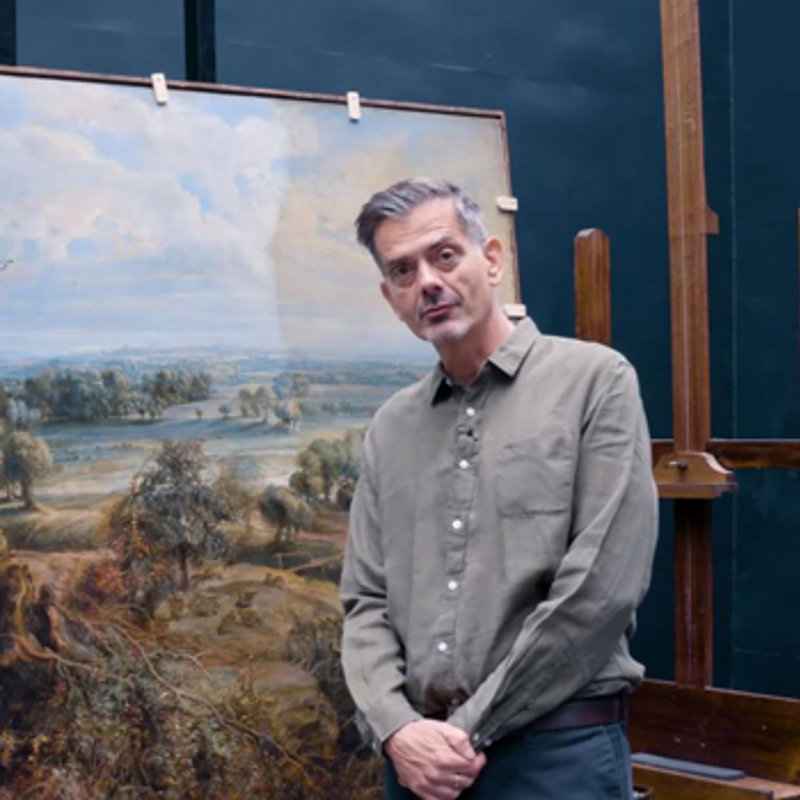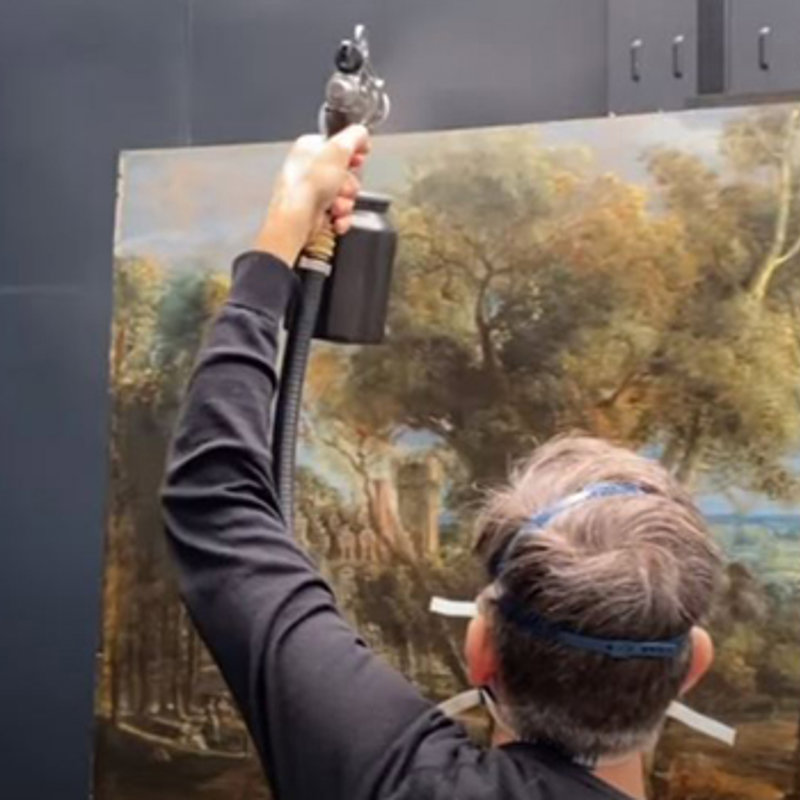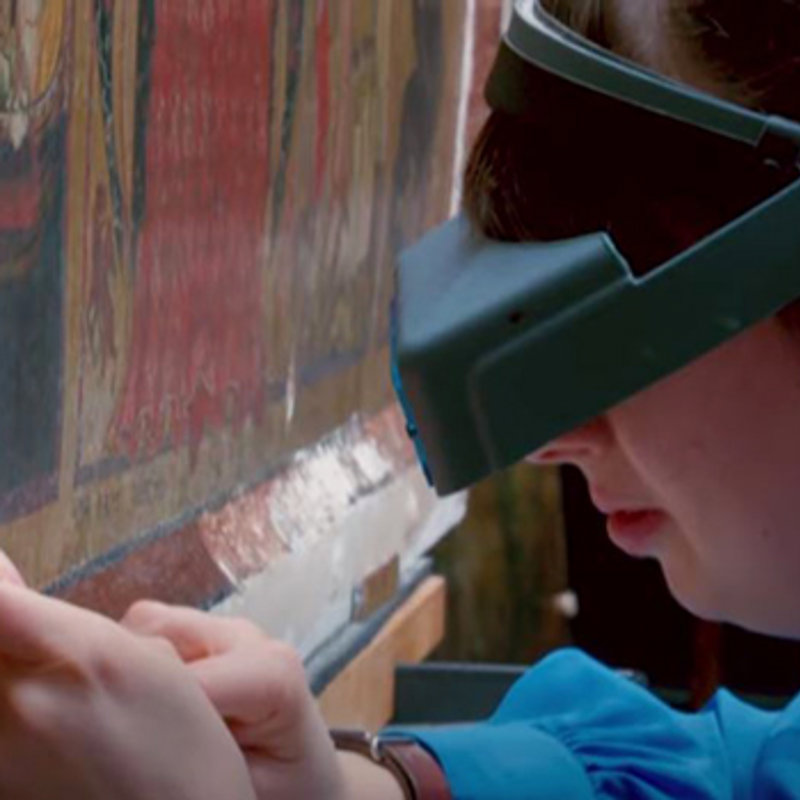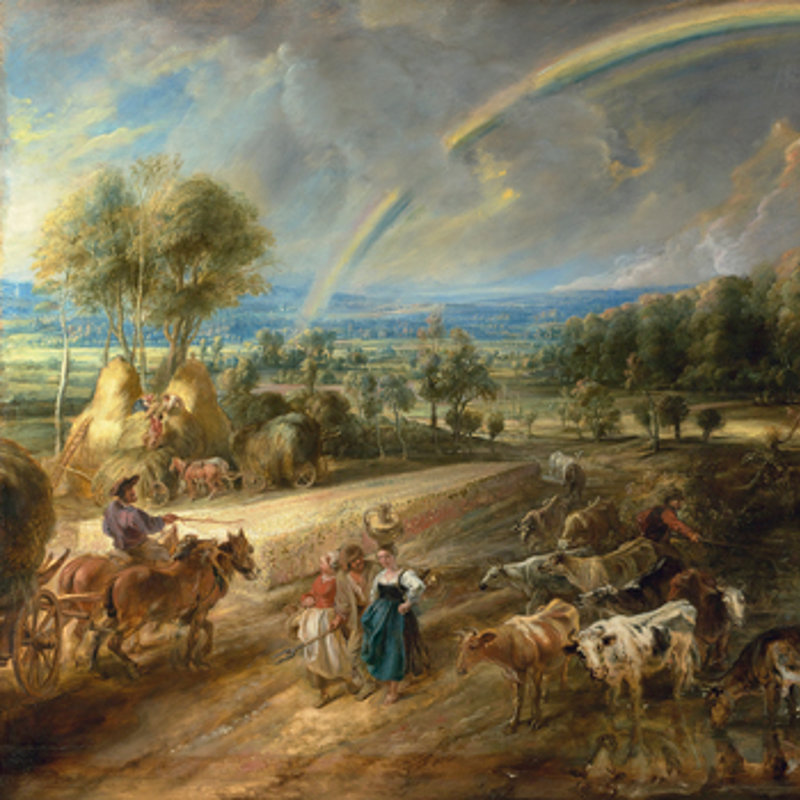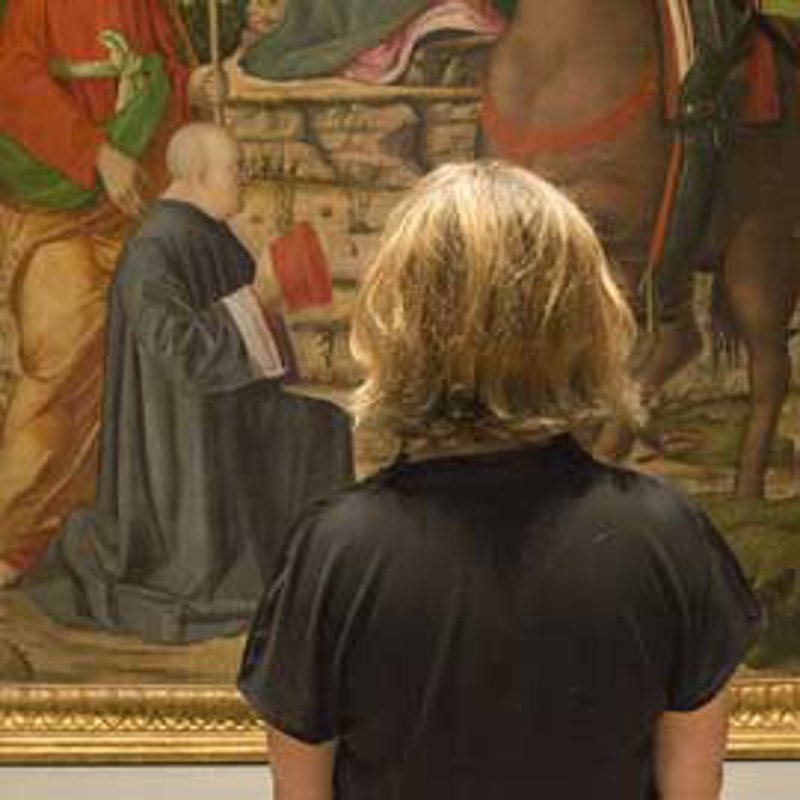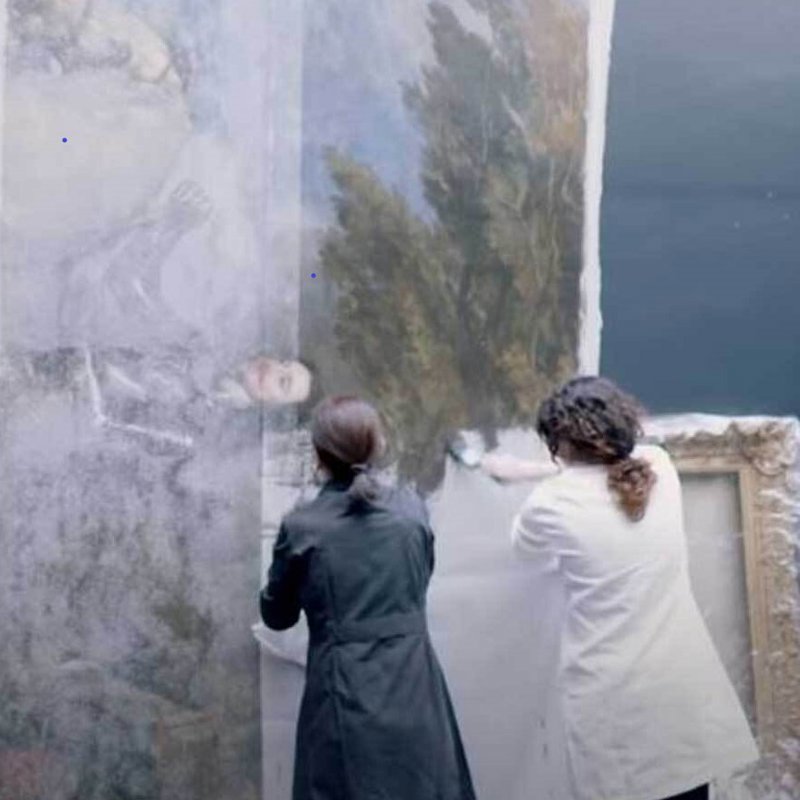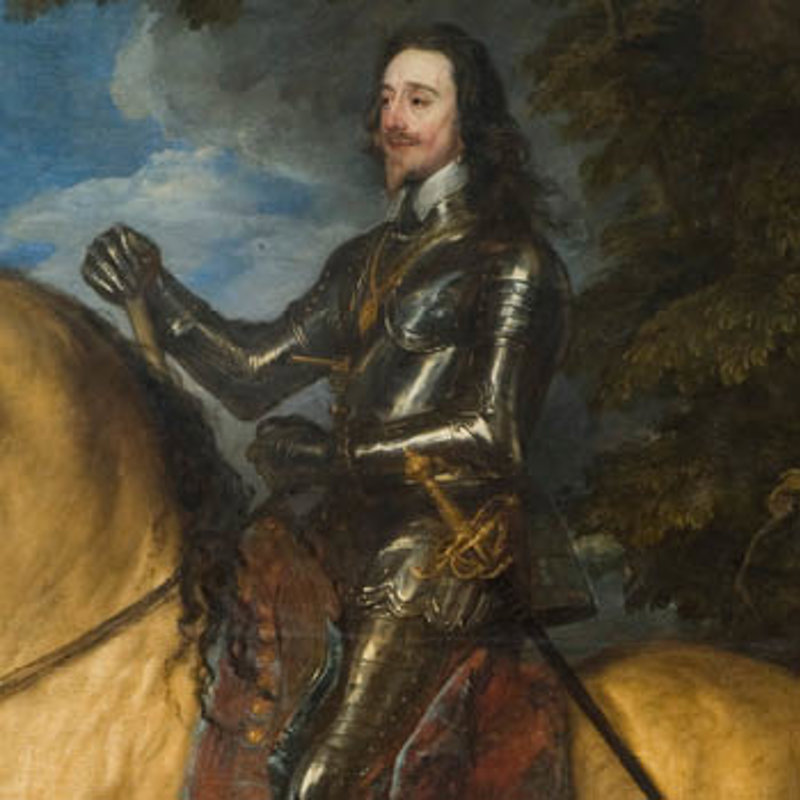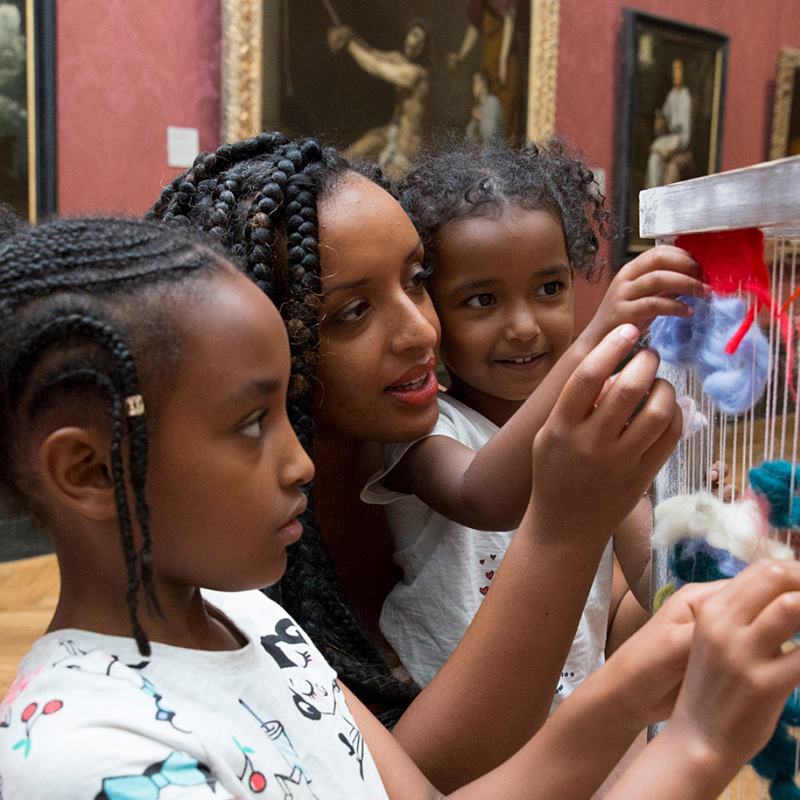Due to the way the panel was constructed, there are many undulations in the support.
Here the profile of the front of the panel is being marked on some timber to make a shaped support.
A profiled temporary bracing structure was constructed (pictured from the front), upon which the panel could rest during treatment and also be used to turn the panel over.
The reverse of the temporary support with profiled battens.
The team needed to be able to turn the panel so that they could see both of the surfaces and apply glue from both front and back.
The reverse of the panel within the temporary support. Each time it was moved, four people were needed.
From the front, you can see the very subtle evidence of a hairline fracture between two boards of the panel.
This is a detail of the reverse of the panel, during the removal of one of the old buttons that was attached over an open dis-join between boards.
The green arrow marks the outer corner of one of Rubens’ campaigns of enlargement.
The desiccated old adhesive was cleaned from the splits and dis-joins.
This image shows the reverse of one of the board joins that had opened up over time. It was much more open and visible on the reverse than on the front. Also visible are the remnants of the original chalk coating.
The open splits and board joins were re-aligned and re-glued so that the paint film was level on the front, and improvements were made to wide concave deformations.
Pressure is applied by wooden props supported above and below the panel. By changing the angles of the props, minute adjustments can be made to the levels of the panel either side of a split until they are in perfect alignment.
Once all of the repairs were completed, an assessment was made regarding the future support and safe handling of the panel.
It was decided that the best support for 'Het Steen', with its complex construction, many undulations, thinness and horizontal grain direction, would be a shaped perimeter strainer with several cross battens, held to the panel with a series of concentric sprung steel tensioners.
The support was machined in the Lower Conservation Workshop from beech planks.
With the panel supported from beneath, battens were shaped to the undulations of the panel.
The support was designed taking into account the placement of the different boards of the panel and the various damages, and so that it would be possible to continue to examine the construction evidence on the reverse without removing it.
Using a transparent sheet marked up with the board joins and repairs, the positions of the concentric tensioners, the attachments for the secondary support, were considered.
The battens were jointed to form a profiled strainer and then fit checked against the back of the panel.
Small adjustments were made to the strainer to ensure that it fitted the reverse of the panel perfectly.
The anchors for the concentric tensioners that will hold the profiled strainer in position against the panel were glued to the reverse of the panel.
The flexible attachment of the strainer will allow the panel to move and flex in response to fluctuations in relative humidity, but it will do so safely without putting stress on the joins, unlike some of the former supports, which included fixed cross-grain battens.
It will also now have much better structural stability in order to be handled and displayed than it had before this treatment when held within a tray following the repairs in 1950.
With the repairs made and support attached, 'Het Steen' was ready to be delivered back to Larry Keith to begin the restoration work.






































